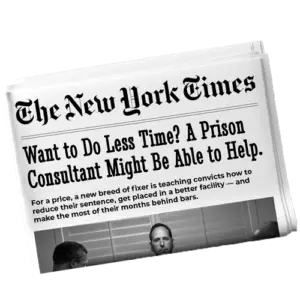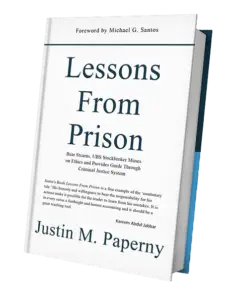Start a dated public profile today and feed it proof every week—work, service, restitution, recovery, and a release plan. Then push that proof into your PSR, sentencing memo, and allocution so a judge can use it.
What to do this week
- Open a public profile (or private if needed; share links selectively).
- Post one dated entry: victims first, what you did today, what you’ll do tomorrow, proof attached.
- Send your draft narrative to counsel before the PSR interview. Ask that key points land in the report.
- Pick one audience (school, clinic, community class). Book a talk. Ask for a letter on letterhead.
- Make one restitution payment you can sustain monthly. Save the receipt.
- Write a one-page release plan: housing, lawful work, supervision terms, relapse prevention, ongoing service.
Why this works (and where I learned it)
- I served 18 months in federal prison. Months in, I was wasting time in the gym. A mentor asked what anyone would pay me for pull-ups. Answer: nothing. He taught me the U-shaped curve of adjustment: early anxiety, easy middle, hard climb near release. Waiting at the bottom makes the climb worse. Starting work on day one makes it manageable.
- Courts can consider “the fullest information possible” about your history and characteristics (see 18 U.S.C. § 3661 and the § 3553(a) factors). Give them substance they can cite.
- Case study A (gambling case): two years of writing, speaking, letters from people who entered recovery because of his talks. Judge referenced the work and imposed a year-and-a-day with shorter supervision.
- Case study B (investment adviser): wired $300,000 weeks before sentencing with no prior record of service or plan. Judge called it calculating and imposed 30 months.
- Case study C (PPP): defensive tone in PSR interview, blame-shifting. Sentence near the top of the range. A second PPP defendant kept emotions in check, paid steadily, sought treatment, built letters; sentence cut down.
- Case study D (physician): spoke to students with documented preparation and a letter on university letterhead. Sought six months instead of two years. The letter helped.
What to put in the profile (and exhibits)
Core blocks
- Victims first: harm in plain terms; no hedging.
- Responsibility: what you did, not what the market or a cooperator did.
- Repair: amounts and dates of restitution; plan to complete.
- Work: lawful income now or job search steps with proof.
- Recovery/treatment: meeting sign-ins, counseling confirmations, testing if applicable.
- Service: talks given, hours, letters from hosts stating what attendees learned.
- Release plan: housing, employment steps, supervision compliance, deterrence you will continue.
Proof people will actually read
- Dated posts (weekly).
- 6–8 targeted character letters that describe observed change and specific acts.
- 2–3 exhibit posts printed and attached to the memo.
Where to put it so it counts
- PSR: deliver your narrative to counsel before the interview so probation sees it and quotes it.
- Sentencing memo: attach excerpts and letters; no rule prevents using the narrative in both PSR and memo.
- Allocution: reference the profile and one dated post by title and date. Read from paper if needed. Keep it clean: harm, responsibility, repair, plan.
Q&A: fast clarifications
Q: No computer access—now what?
A: Handwrite. Mail to a family partner to upload. Date every page.
Q: Will the judge read it?
A: Sometimes it’s cited from the bench; sometimes not. Act as if it will be read and say where it lives during allocution.
Q: Do violent convictions get nothing from the First Step Act?
A: Earned Time Credits are limited for many offenses, but other avenues—programming credits, discipline-free history, and compassionate release—exist. You need a documented record either way.
Q: I got a call offering early release for a fee.
A: It’s a scam. Staff do not call families for money. Do not send a dollar.
Messaging that helps vs. hurts
Helps
- Plain admission of conduct
- Dates, amounts, third-party letters
- Calm tone with probation and court
- Work and steady payments
Hurts
- Anger at DOJ, complaints about co-defendants
- “It’s not an excuse…” followed by excuses
- Last-minute wires
- Dozens of copy-paste letters
The U-curve: act before it flattens you
- Descent: you learn the system.
- Bottom: comfort feels easy; this is the trap.
- Ascent: release pressure—bills, restitution, work, stigma—hits hard.
Start the ascent now: daily writing, steady payments, booked talks, job steps you can prove.
FAQ
How many letters?
6–8 specific letters beat 30 generic ones.
How long should allocution be?
If your record is strong on paper, one page is enough. If the court knows little, add substance, not adjectives.
Can family post for me?
Yes. Many spouses and siblings maintain profiles using calls, emails, and mail.
If this raises more questions than it answers, join the next live webinar and see how others are building proof week by week. If you need direct feedback on a narrative or allocution draft, book a short call and bring one document and one question. We’ll keep it concrete.
Justin Paperny



